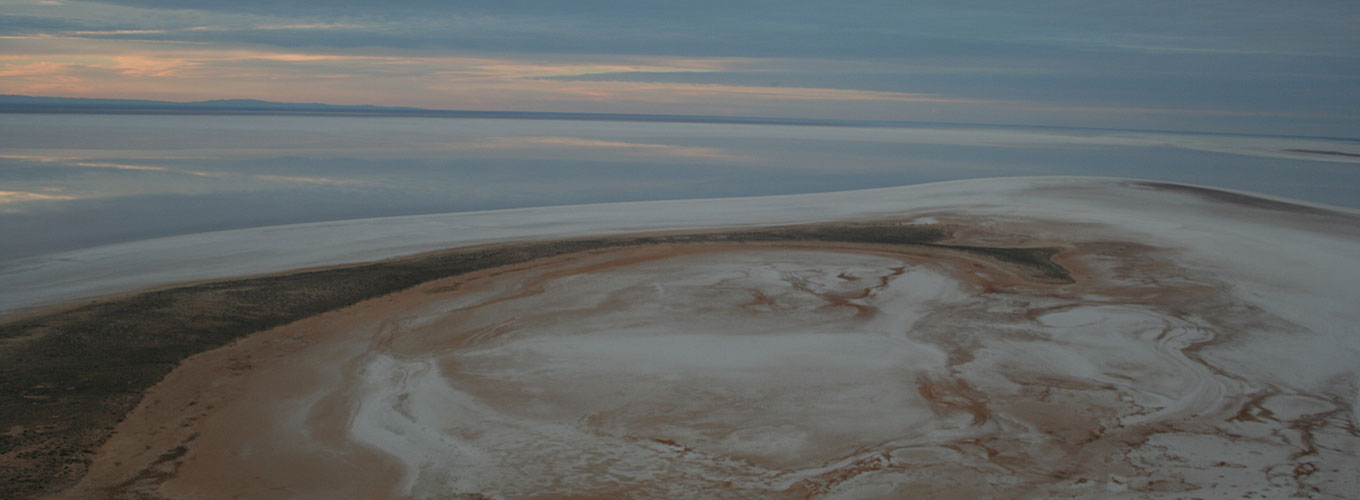Impact: Understanding past wet and dry weather cycles facilitates better infrastructure and population planning for future climate challenges
Australia’s modern climate oscillates between extremes, with periods of prolonged drought followed by devastating floods.
These extremes are a fundamental component of the current Australian biophysical landscape and appear to be critical in global-scale processes such as carbon cycling.
But how long has the Australian landscape been characterised by such extremes? What drives the wet and dry boom and bust cycles, when and how often do they occur and what will the future hold?
Dr Tim Cohen and Dr Sam Marx, from UOW’s School of Earth and Environmental Sciences, are attempting to answer such questions at a continental scale.
The big wet
Using a range of geochronological techniques such as dating individual grains of quartz and experimental uranium-series techniques, Dr Tim Cohen and colleagues from UOW and ANSTO, as well as other international universities, are investigating Australia’s past wet cycles.
Through applying the techniques to environmental proxies, that unequivocally tell us when it was wet, this research is contributing to our understanding of what drives Australia’s climate by providing a clear picture as to how Australia’s landscape has responded to such variability in the past.
Dr Cohen’s research recently identified a major hydrological transformation at the time humans arrived in Australia and some of the last megafauna became extinct.
As well, it is providing a reliable means of determining how often in the last two millennia continental-scale wet phases occurred; thus providing information about the frequency of intervening dry periods.
By capturing data on environmental change from key locations on the Australian continent over the last glacial cycle and integrating this with emerging geochemical techniques, this work is providing an unprecedented picture of how rapidly the Australian landscape has responded to climate variability and is informing us about potential future pathways for adaptation.
The big dry
Understanding drought, which is marked by an absence of physical and biological activity and therefore leaves little evidence in the landscape, is the focus of research by Dr Sam Marx and colleagues from the University of Queensland and Trinity College, Dublin.
There is one activity likely to increase during dry periods: dust storms. These still leave little sign over most of the landscape because even very large events result in extremely thin deposits, albeit over large areas, and these are quickly remobilised by water transport.
However, some environments, such as ice fields and rainfall fed peat swamps, do provide records of dust transport throughout time. From these sites, records of past dust activity can be reconstructed, providing insight into past drought events.
As well as uncovering information about past dust storms, the research team have been establishing geochemical ‘fingerprints’ of different dust source areas, allowing the region from where dust was sourced to be identified.
This provides the ability to ‘track’ past changes aridity across Australia in response to changing climate patterns. This research is providing insights into the frequency and drivers of drought events in Australia, and is contributing information towards water management decisions in the Murray-Darling Basin.
- SCHOOL OF EARTH AND ENVIRONMENTAL SCIENCES, UOW
The Big Wet
Dr Tim Cohen
Professor Gerald Nanson
Associate Professor Brian Jones
Dr Sam Marx
Dr Tony Dosseto - ANSTO
Dr David Fink
Dr Toshi Fujioka - UNIVERSITY OF POTSDAM, GERMANY
Dr John Jansen - DESERT RESEARCH INSTITUTE
Dr Steve Wells - UNIVERSITY OF INNSBRUCK, AUSTRIA
Dr Mike Meyer
Dr Luke Gliganic - SCHOOL OF EARTH AND ENVIRONMENTAL SCIENCES, UOW
The Big Dry
Dr Sam Marx - UNIVERSITY OF QUEENSLAND
Professor Hamish McGowan - TRINITY COLLEGE, DUBLIN
Professor Balz Kamber
Copyright © 2014 University of Wollongong. CRICOS Provider No: 00102E Privacy | Disclaimer & Copyright Info | Site Map

